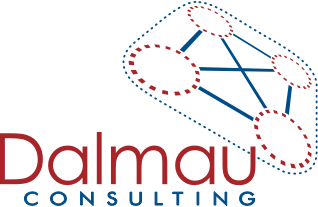As far as we are aware, humans are the only creatures that ask questions. This shows a level of self-insight: that we don’t know or understand everything about a situation. Questions take us beyond the obvious.
Generally, questions are seen as ways to elicit or exchange information, but much more importantly questions can,
- unlock learning
- fuel creativity and innovation
- reveal how another person ticks, and
- build relationships
The use of carefully framed questions is an undervalued tool in organizations and teams. Unfortunately, our education system does not seem to recognise the value of questions or the skills required to construct and use questions. Questioning is a skill to be honed. Our education systems emphasize advocacy at the expense of skilled inquiry.
Good questions are those for which we don’t already have the answers, and open questions (those that cannot be answered with a ‘yes’ or ‘no’) encourage reflection and a more thoughtful response that opens up further questioning and exploration.
The value of questioning for leaders and organizations in building relationships, aligning intentions, unleashing innovation and generally improving performance was highlighted a recent HBR article (May-June 2018) The Surprising Power of Questions, by A Wood Brooks & LK John. Based on their own and others’ research the authors outline what they call the New Socratic Method as a way to become a better questioner.
Below is a modified and expanded summary of this New Socratic method that they describe, which offers really useful tips to leaders and managers.
- Ask more questions – type, tone, sequence and framing of these questions matter
- Be clear on your conversational goals
- Are you trying to build a relationship or do a task together (a cooperative conversation)?
- Are parties seeking to uncover sensitive information from one another or serve their own interests (a competitive conversation),
- Uncover or understand the other person’s thinking process, i.e. how they construct their experience or
- a bit of all three?
- Favour follow-up questions – those that seek further information.
These indicate that you are listening, interested and care and result in the listener feeling respected and heard.
- Know when to keep questions open-ended.
Narrowing respondent’s options with a closed question can lead to feelings of manipulation or playing to the questioner’s bias. Open questions tend to lead to unexpected answers. However, open-ended questions can leave more room for the respondent to dodge or even lie in response to a question – so in difficult negotiations this is not always the best approach.
- Get the sequence right
This depends on your conversational goals.
If you are wanting to build a relationship, then starting with less sensitive questions and escalating slowly seems more effective. On the other hand, research has shown that if you are wanting people to reveal sensitive information then asking people questions in the reverse order of intrusiveness can get you results, as later questions seem relatively less intrusive. However, it is a delicate balance to as you may risk offending the other with your first question.
Also, because people like to be seen as consistent, questions asked earlier in a conversation may influence later questions. For example: When you ask the following 2 questions,
- How satisfied are with your work-life?
- How satisfied are you with how your team works?
in this order you are more likely to get consistent answers because people tend to interpret that if you are satisfied with work-life that your team work part is also satisfying. However, when asked in the reverse order, answers have been shown to be less closely correlated.
- Get your behavior right – use the right tone
A more casual way of asking questions (using approachable voice and behavioural patterns) and breathing slowly and deeply in your chest rather than a more formal approach (credible voice tones and behavioural patterns), is far more likely to have people open up when being questioned.
Key voice and body characteristics:
|
|
More Effective | Less Effective |
|
Voice and body
|
Approachable (“more casual”) | Credible (“more formal”) |
| Voice tones | Regularly rising and falling – more lilting | Flat tone |
| Fluency | Continuous – few pauses or hesitation | Frequent pausing |
| Eye contact | Frequent | Infrequent |
| Facial expression | Smiling | Little expression |
| Body position | Relaxed, with gentle movement | More still and ‘upright’ |
| Speed of response | Pausing and slowing speech | Responding quickly with the next question |
- Pay attention to group dynamics
If one person in a group opens up and shares more personal views or information in response to questions, others tend to follow. The opposite is also true.
Other pathways for unleashing the power of questions
There have been developed over the years a whole range of processes, strategies and techniques all based on unleashing the power of questioning to influence others. These include, Appreciative Inquiry, coaching, motivational interviewing, and crucial conversations to name but a few.
Two, however, are worth noting for their application in many social settings including workplaces: NLP and the World Café approach.
NLP
The field of Neuro-Linguistic Programming (NLP), offers some very helpful strategies and insights regarding effective ways to not only open up a wealth of information but gives enormous advantages for influencing others by the use of questions.
In particular, the Meta Model of communication from NLP seeks, through a series of questions, to reverse and unravel the deletions, distortions and generalizations that are a common part of language.
These questions aim to fill in the missing information, and elicit specific information to make sense of the communication.
The Meta Model reconnects a person’s language with their experience and can be used for, gathering information, clarifying meaning, identifying limitations and opening up choices.
Below is a summary of the range of indicative questions that can be used to achieve these outcomes (from J O’Connor & J Seymour, Introducing NLP 1990)
| Meta Model Pattern | Question |
| Deletions | |
| Unspecified noun | Who or what specifically…? |
| Unspecified verb | How specifically …? |
| Comparison | Compared with what? |
| Judgement | Who says…? |
| Nominalization | How is this being done? |
| Generalizations | |
| Modal Operator of Possibility | What prevents you…? |
| Modal Operator of Necessity | What would happen if you did/ didn’t…? |
| Universal Quantifier | Always? Never? Everyone? |
| Distortions | |
| Complex Equivalence | How does this mean that? |
| Presupposition | What leads you to believe that…? |
| Cause and Effect | How exactly do you make yourself do this? |
| Mind Reading | How do you know…? |
The World Café approach
The World Café approach was originally developed for creating dynamic conversations and knowledge sharing about issues that matter in communities. However, it also has great value for organizations who wish to engage deeply and meaningfully with employees and / or stakeholders, and motivate change.
At its heart the approach is based on the careful framing of questions.
Juanita Brown and David Isaacs who developed this method identify three types of questions:
- Questions for focusing collective attention (e.g. What is important to you about the specific situation and why do you care?)
- Questions for connecting ideas and finding deeper insight (e.g. What has had real meaning from what you have heard? What surprised you? What challenged you?)
- Questions that create forward momentum (e.g. What would it take to create change on this issue?)
Good questioning skills, are not innate for most. They need to be practiced and honed. Preparation time to frame questions carefully is required especially before going into important conversations.
However, everyone can learn how to question more elegantly and achieve so many more benefits than just information exchange – especially when attention is also paid to the intent, tone and style of delivery.






